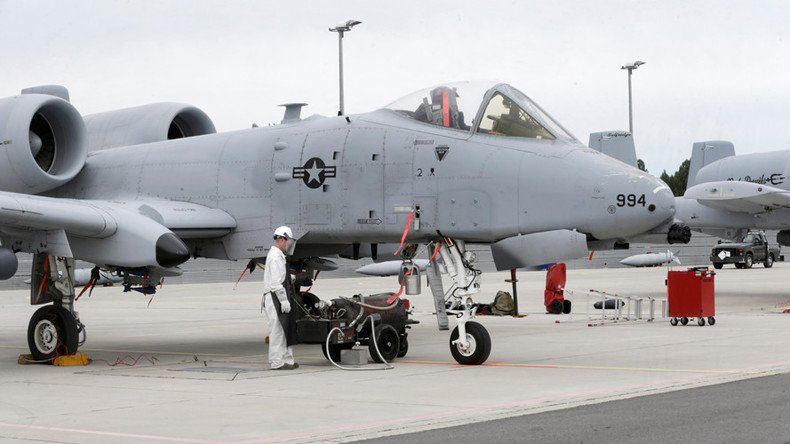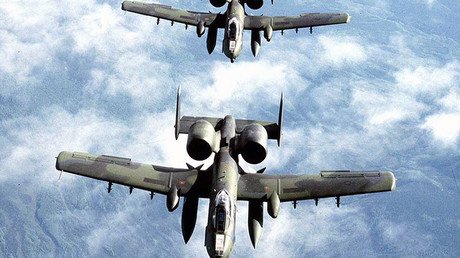Watchdog slams clueless Air Force over plans to scrap A-10 workhorse jet

The Pentagon and the US Air Force are underestimating the risks of scrapping the “unique” A-10 fleet, in favor of the F-35 jet, according to a report by the Government Accountability Office warning that the military is neglecting the “full implications.”
“The Department of Defense and Air Force do not have quality information on the full implications of A-10 divestment, including gaps that could be created by A-10 divestment and mitigation options,” the GAO said in a report declassified August 24. A classified version was first issued in July, according to Popular Military.
#Lockheed, could you spare a dime? #Pentagon seeks F-35 savings https://t.co/af0ngEb6N5pic.twitter.com/Dk5Vp9r8fc
— RT America (@RT_America) July 11, 2016
The Pentagon plans for the A-10's retirement to be completed by 2022, three years later than initially proposed, when the fleet will be replaced with the F-35, one of the Pentagon’s most expensive warplanes.
It is expected that the F-35 would take over Close Air Support (CAS) missions from the A-10, filling one of its top three primary tasks.
The Air Force currently maintains 284 operational A-10C jets, nicknamed “Warthog,” with an average fleet age of 34 years and 77 percent mission-capable rate, according to data cited in a February report in Flight Global.
“The A-10 brings useful and unique capabilities to the battlefield,” the GAO said, citing officials, who noted that the warplane was helpful in devastating Islamic State.
But while the Air Force estimates that the replacement with newer F-35s would be more cost-effective and would save the Pentagon over $4 billion in five years, the GAO says the department has no clear determination of the actual benefit, if there would be any.
“[…] The Air Force did not fully assess the cost savings and implications associated with the A-10 divestment or its alternatives,” the agency said in the report, referring to its 2015 findings. For example, increased use of other aircraft such as the F-16 and F-15 fighter jets could mean less savings, yet, keeping the A-10 might also mean more spending.
“The Air Force estimate did not include potentially significant costs for things such as software upgrades or structural enhancements that it could incur if it were to keep the A-10,” the agency found.
Another concern is that divesting A-10s would also leave a gap in rescue and search missions, which is among their top three primary purposes. However, the Air Force failed to address what that role would be filled should A-10s be entirely scrapped.
“Although the Air Force has several efforts underway to generally mitigate the loss of capabilities that would result from A-10 divestment, it has not identified how or if it will replace the A-10’s role in combat search and rescue missions,” the GAO said.
It stressed that the Air Force has “no obvious replacement for the A-10” in the CSAR Sandy. While F-16s or F-15Es could be used for it, extensive training would be needed.
“The A-10 is currently the only DOD platform assigned to this mission and every combat-coded squadron has CSAR-Sandy qualified pilots. Training requirements for CSAR-Sandy qualification are very high due to the complexity of the mission,” the GAO said.
READ MORE: ‘Every F-35 a country buys from Lockheed Martin damages its defense’
The government agency warns divestments from A-10s may have “far-reaching consequences.”
The GAO said the secretary of the Air Force should “develop quality information that fully identifies gaps in capacity or capability that would result from A-10 divestment, including the timing and duration of any identified gaps, and the risks associated with those gaps” before going ahead with the A-10s’ retirement.













